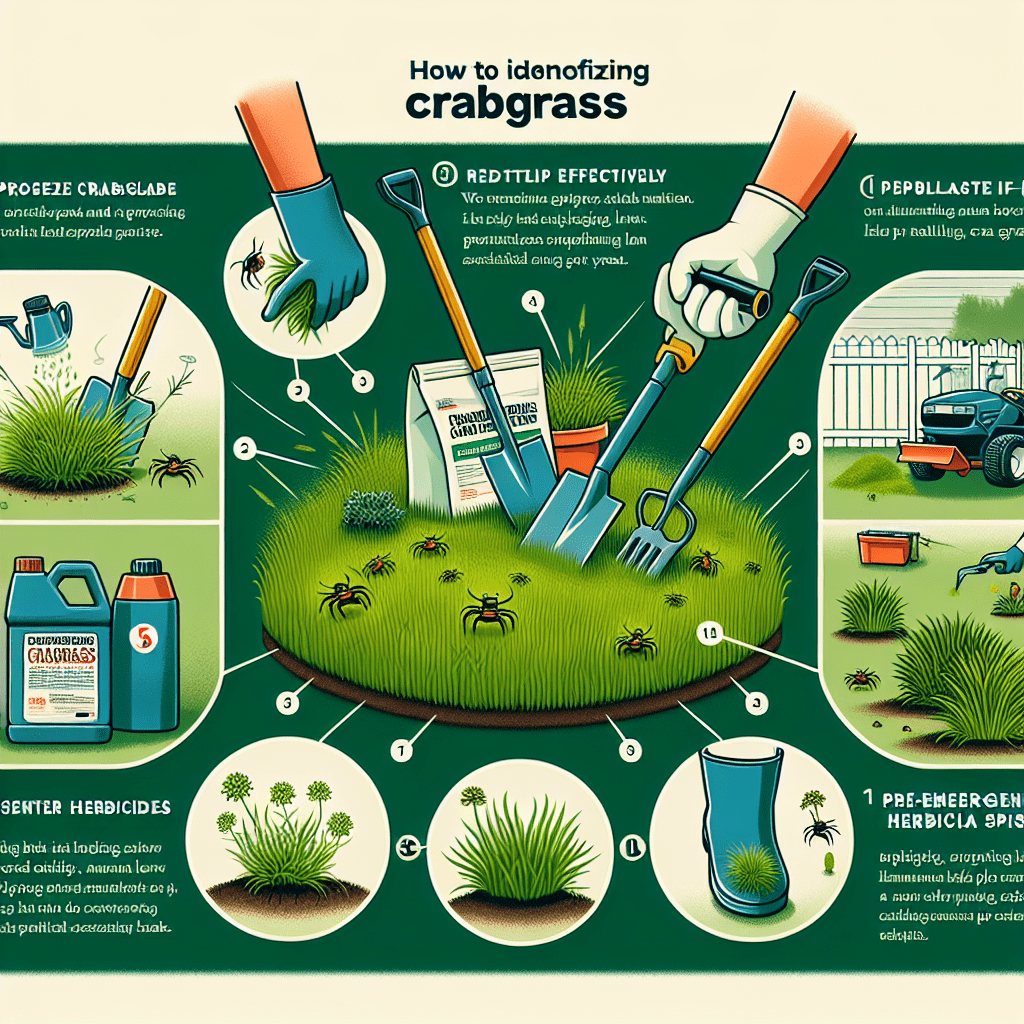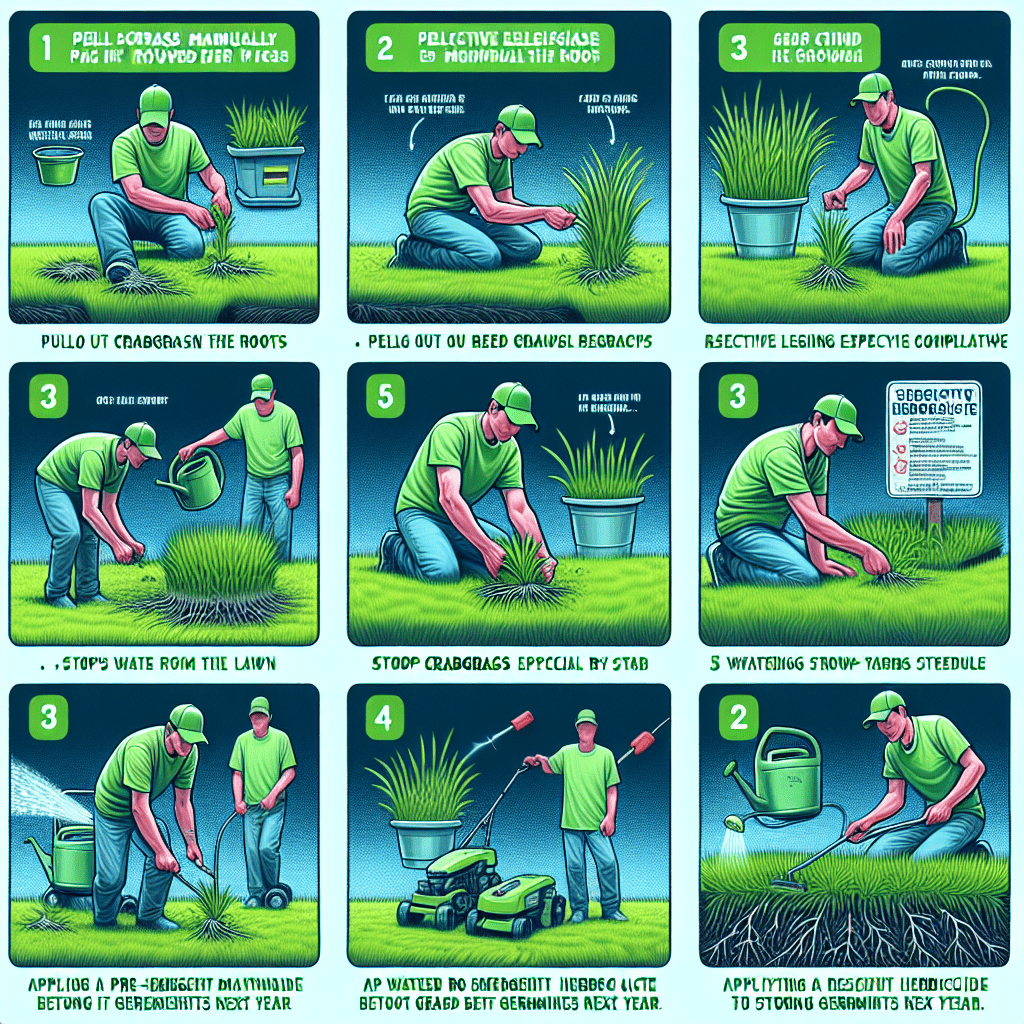-
Table of Contents
How To Get Rid Of Crabgrass That’s Growing In Your Lawn And Prevent It From Coming Back Next Year
Introduction
Crabgrass is a common and persistent weed that can quickly take over your lawn if left unchecked. Its rapid growth and ability to spread make it a nuisance for homeowners who strive for a lush and weed-free lawn. In this article, we will explore effective methods to get rid of crabgrass and prevent its return next year.
Understanding Crabgrass
Before we delve into the solutions, it’s important to understand the characteristics of crabgrass. Crabgrass (scientifically known as Digitaria) is an annual weed that thrives in warm-season grasses. It germinates in the spring when soil temperatures reach around 55 to 60 degrees Fahrenheit and grows rapidly throughout the summer months.
Crabgrass has a distinctive appearance with wide, flat blades that radiate from a central point. It forms dense clumps and can quickly overtake your lawn, crowding out desirable grass species. Additionally, crabgrass produces thousands of seeds that can remain dormant in the soil for several years, making it a persistent problem.
1. Manual Removal
If you have a small infestation of crabgrass, manual removal can be an effective method. Follow these steps:
- Identify the crabgrass plants in your lawn.
- Use a hand trowel or weed puller to dig out the entire plant, including the roots.
- Dispose of the crabgrass in a sealed bag to prevent reseeding.
- Fill the resulting hole with soil and grass seed to promote regrowth of desirable grass.
While manual removal can be time-consuming, it is a chemical-free approach that eliminates crabgrass without harming your lawn.
2. Pre-Emergent Herbicides
Pre-emergent herbicides are an effective tool for preventing crabgrass growth. These herbicides create a barrier in the soil that inhibits crabgrass seed germination. Follow these guidelines when using pre-emergent herbicides:
- Apply the herbicide in early spring before crabgrass seeds germinate.
- Read and follow the instructions on the herbicide label carefully.
- Water the treated area after application to activate the herbicide.
- Avoid overseeding your lawn after applying pre-emergent herbicides, as they can also prevent desirable grass seeds from germinating.
It’s important to note that pre-emergent herbicides are most effective when applied before crabgrass seeds have germinated. Once the weed has emerged, these herbicides are less effective.
3. Post-Emergent Herbicides
If you already have crabgrass growing in your lawn, post-emergent herbicides can help eliminate the weed. These herbicides are designed to kill actively growing crabgrass. Consider the following when using post-emergent herbicides:
- Identify the type of grass in your lawn, as some post-emergent herbicides may harm certain grass species.
- Apply the herbicide directly to the crabgrass, following the instructions on the label.
- Avoid applying post-emergent herbicides on hot days, as they can damage your lawn.
- Repeat the application if necessary, as crabgrass can be resilient.
Post-emergent herbicides are most effective when applied during the early stages of crabgrass growth. As the weed matures, it becomes more difficult to control.
4. Proper Lawn Care Practices
Maintaining a healthy lawn is one of the best ways to prevent crabgrass from taking hold. By following these lawn care practices, you can create an environment that discourages crabgrass growth:
- Mow your lawn at the appropriate height for your grass species. Taller grass shades the soil, making it less favorable for crabgrass germination.
- Water deeply and infrequently to encourage deep root growth in your grass. This helps your lawn compete with crabgrass.
- Aerate your lawn to reduce soil compaction and improve water and nutrient absorption.
- Overseed your lawn in the fall to promote a thick and healthy turf that can outcompete crabgrass.
By implementing these practices, you create an environment that is less conducive to crabgrass growth, reducing the likelihood of an infestation.
5. Professional Lawn Care Services
If you’re struggling to control crabgrass on your own, consider hiring a professional lawn care service. These experts have the knowledge and experience to effectively eliminate crabgrass and prevent its return. They can tailor a treatment plan specific to your lawn’s needs and provide ongoing maintenance to keep your lawn healthy and weed-free.
Conclusion
Crabgrass can be a persistent and frustrating weed to deal with, but with the right approach, you can effectively eliminate it from your lawn and prevent its return. Whether you choose manual removal, herbicides, proper lawn care practices, or professional services, taking action early and consistently is key. By implementing these strategies, you can enjoy a lush and crabgrass-free lawn for years to come.

